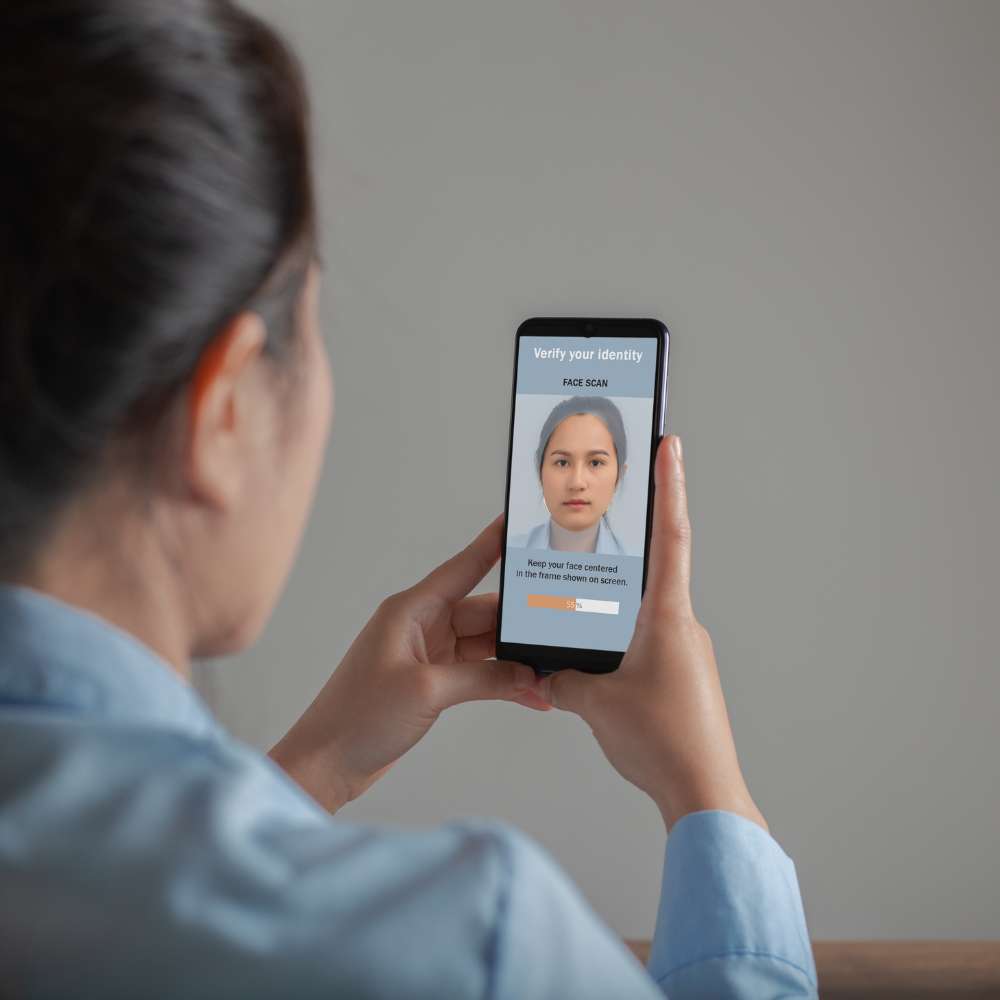Video KYC in the BFSI Sector: Transforming Customer Onboarding in Banking and Finance
Video KYC in the BFSI Sector: Transforming Customer Onboarding in Banking and Finance
Blog Article
In the present scenario, the world is highly reliant on technology, and industries have become digitalized. Harnessing this digital power contributed to efficient functionality across the industries. Among them is the BFSI (Banking, Financial Services, and Insurance) sector. The BFSI is incorporating new technologies to implement smooth operations and enhance customer experiences. One of the most impactful innovations has been the introduction of Video KYC in the BFSI sector, a digital method for conducting Know Your Customer (KYC) processes remotely. This transformative solution has not only increased efficiency and security but has also made banking and financial services more accessible to a wider audience. In this article, we explore the importance of Video KYC in the BFSI sector, its benefits, challenges, and the role it plays in reshaping customer engagement.
What is Video KYC?
Video KYC, or Video-based Know Your Customer, is a method that allows financial institutions to conduct customer verification over a video call. Traditional KYC processes require customers to physically visit a bank or financial institution with identity documents to complete verification. However, with Video KYC, customers can complete the verification process remotely from the comfort of their homes or workplaces, significantly reducing the time and effort involved.
In Video KYC in the BFSI sector, a live video interaction is conducted between a representative and the customer, where identity documents and live facial verification are completed in real-time. The process is recorded, and the necessary data is securely stored, ensuring the regulatory standards.
Why Video KYC is Important in the BFSI Sector?

Enhanced Customer Convenience: Video KYC in the BFSI sector offers the best convenience, allowing customers to complete the KYC process from any location. This remote verification option has proven especially helpful for customers in rural or remote areas who may not have easy access to physical branches.
Faster Onboarding: The traditional KYC process can take days, or even weeks, to complete. Video KYC, on the other hand, can be completed within minutes, significantly speeding up the onboarding process. Faster onboarding enables BFSI institutions to serve more customers, boosting operational efficiency.
Cost Reduction: With Video KYC in the BFSI sector, the need for physical branches and in-person visits is minimized, which helps reduce operational costs. Financial institutions can save on resources, such as paper, printing, and personnel, by moving the KYC process online.
Increased Security and Compliance: The BFSI sector is highly regulated, and following the KYC norms is essential to prevent money laundering, fraud, and other financial crimes. Video KYC utilizes advanced technologies like AI-based facial recognition, OCR (Optical Character Recognition), and liveness checks, ensuring secure and accurate verification. These technologies also help prevent identity fraud by cross-verifying identity documents against real-time video.
Improved Access for Special Needs Customers: Video KYC provides a solution for customers with limited flexibility, making banking services accessible for senior citizens, people with disabilities, or those who cannot easily travel.
How Video KYC Works in the BFSI Sector?
The process of Video KYC in the BFSI sector is generally simplified and follows a few key steps:
Initiating the Video KYC Process: Customers initiate the Video KYC process by scheduling a video call with a representative from the financial institution. This can often be done through the institution’s mobile app or website.
Document Verification: During the video call, the customer is asked to present identity documents, such as a government-issued ID. Advanced OCR technology is used to read and extract data from the documents for verification.
Facial Recognition and Liveness Check: The representative and the system conduct a liveness check to ensure that the customer is physically present and not attempting fraud with pre-recorded videos. AI-based facial recognition software compares the customer’s face with the photograph on their ID document for an additional layer of verification.
Compliance and Data Recording: The entire process is recorded and stored as proof of compliance. The data is securely stored following regulatory requirements and privacy standards, helping BFSI institutions remain compliant with KYC regulations.
Final Approval: Once the verification is complete, the representative grants approval and the customer’s account is activated, allowing them to access services instantly.
Benefits of Video KYC in the BFSI Sector

Time Efficiency: With Video KYC, BFSI institutions can complete the onboarding process in minutes, allowing customers immediate access to services.
Lower Operational Costs: By reducing reliance on physical infrastructure and paperwork, Video KYC helps BFSI institutions cut costs while also supporting their sustainability goals.
Greater Customer Reach: Video KYC enables BFSI institutions to reach underserved markets, particularly rural and remote areas. This inclusivity expands the customer base and improves financial accessibility.
Enhanced Fraud Prevention: The integration of AI-driven facial recognition and liveness checks makes Video KYC a strong solution against fraud, helping to maintain the integrity of financial transactions.
Regulatory Compliance: Video KYC helps financial institutions follow government-mandated KYC norms by providing a secure, auditable trail of customer verification.
Challenges of Implementing Video KYC in the BFSI Sector
While Video KYC offers numerous advantages, the BFSI sector faces several challenges when implementing this technology:
Technological Infrastructure: Implementing Video KYC requires a strong technological foundation, including high-speed internet, secure video conferencing platforms, and robust data storage systems. Some regions may lack the necessary infrastructure to support this technology seamlessly.
Data Privacy and Security: Since Video KYC involves handling sensitive customer information, BFSI institutions must prioritize data privacy and protection. Compliance with data protection laws, such as GDPR, is essential, and any lapse in security could lead to legal complications.
Customer Adaptability: Not all customers are comfortable with digital interactions, especially those in older age groups. BFSI institutions must find ways to make the Video KYC process user-friendly to increase adoption.
Training and Resource Allocation: Customer-facing representatives need training on using Video KYC tools, managing digital interactions, and ensuring compliance. BFSI institutions must allocate resources to effectively implement and sustain Video KYC operations.
Regulatory Changes and Compliance: The regulatory environment around KYC processes is constantly evolving. Financial institutions must stay updated on the latest regulatory requirements to ensure that their Video KYC processes are compliant, which can require significant resources.
The Future of Video KYC in the BFSI Sector

As Video KYC in the BFSI sector becomes increasingly popular, financial institutions are expected to adopt high-functioning technologies to enhance the process. Emerging technologies like AI, machine learning, and blockchain will play a significant role in improving the accuracy, security, and efficiency of Video KYC.
As customer expectations change, BFSI institutions will need to offer perfect and flawless Video KYC experiences. The integration of multilingual support, 24/7 availability, and simplified user interfaces will make Video KYC accessible to a more diverse customer base.
Regulatory frameworks are also likely to adapt, promoting a more standardized and streamlined approach to Video KYC. This will encourage more financial institutions to implement Video KYC, making remote verification the standard for customer onboarding in the BFSI sector.
Here’s How Video KYC Works For Bank Customers | Explained
Conclusion
Video KYC in the BFSI sector has proven to be a game-changer, revolutionizing customer verification by making it faster, safer, and more convenient. It has allowed BFSI institutions to reduce costs, reach more customers, and prevent fraud effectively. Despite certain challenges, the benefits of Video KYC outweigh the drawbacks, and it is expected to play an even more prominent role in the industry’s future.
For BFSI institutions, adopting Video KYC is not just about keeping up with technological trends, it is about staying competitive and providing customers with a modern, secure, and accessible way to access financial services. As the sector continues to evolve, Video KYC will remain a crucial tool for transforming the way BFSI institutions engage with and onboard their customers.
By implementing Video KYC in the BFSI sector, financial institutions can set themselves apart in a competitive market, showcasing their commitment to innovation, security, and customer-centric solutions. Report this page